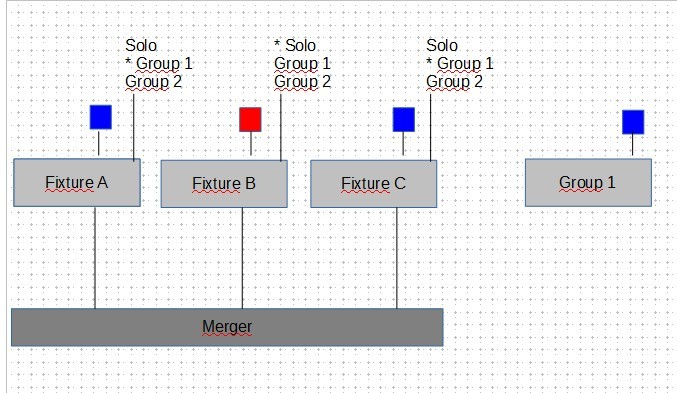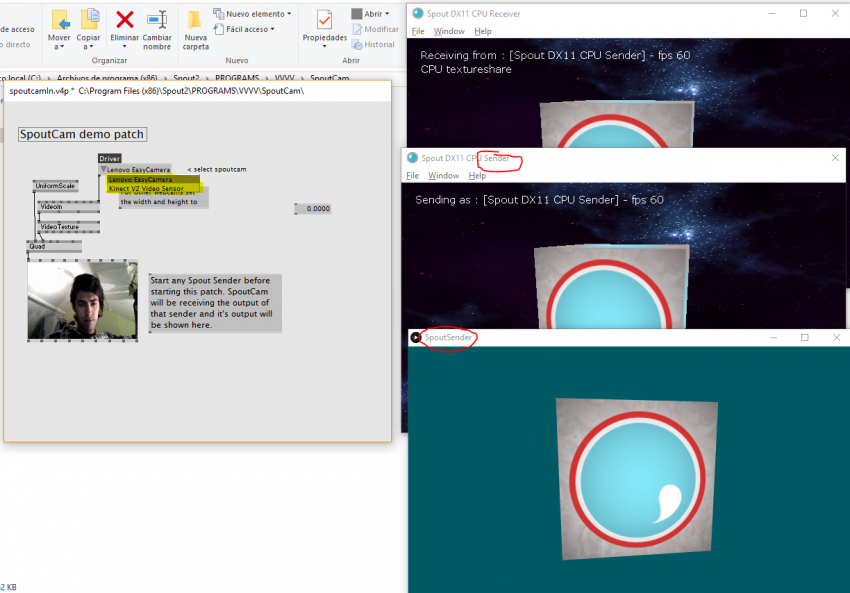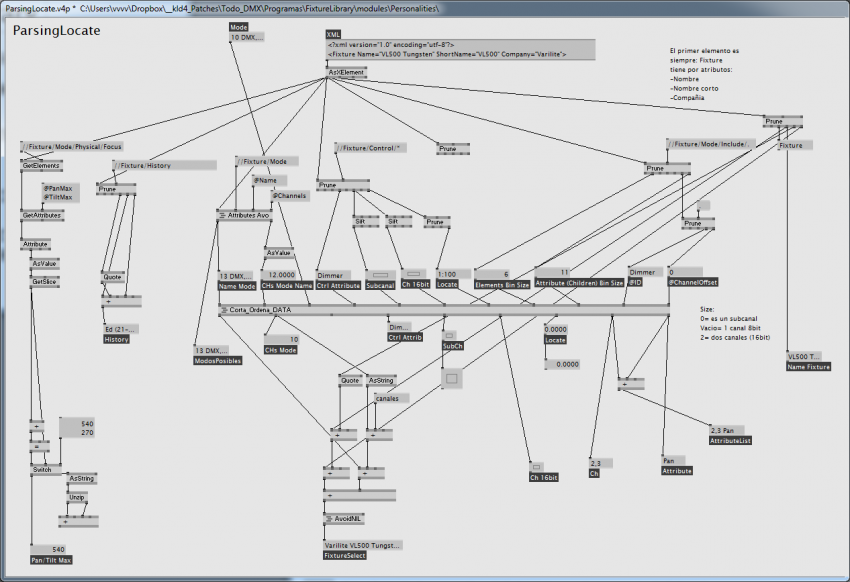Hi Tonfilm, Hi Kalle !
Ok about Preseting things, we are talking about a framework, where there is 2 things:
- Fixtures definition (channels, modes)
- How to send them data (ergonomy with groups)
Fixture are at the far end of the VVVV chain. They receives positions, intensities, presets on generic functions ( pan, tilt, colors, focus, gobos…), and route them to the proper channels, with their start adress.
The demo patch is shown inverse ti what it should be: fixture receives and routes main data. They are not at the bottom, but at the end of the chain of orders.
As Kalle noticed, Fixtures are very different and needs at the end some common labelling to be used (certain moving heads have 36 parameters).
Be aware that any fixture will need peculiar corrections ( for a movement, the Fixture on the far left will need some peculiar correctors, very different from the the fixture in center, saying that the 2 are drawing the same movement on the floor. You will need to correct them).
What is interesting is to refer to the fixture with a4 ways approach.
This 4 way approach can be understood taking TimeLiner in mind, and controlling fixture on a show with 4 types of events, that we could control with Subgroups:
-1 / Enlightenment family: dimming, colors, light corrector and modes, strobe… (power on is utility and will not take place in a use with a timeliner for example)
-2 / Lens family: focus, iris, angle
-3 / Visual effect family: gobos, visual specific effects (rotating wheel)
-4 / Utility family: Correctors for movement when a fixture was not installed in the good way (missing 45°), for Power On, etc etc…
The 4th one will not appear in a timelin in the manner of a show.
So, continuying this reflexion about Groups, you will easely understand that i may need to use in a show: a Global group, that contains all parameters, and say that a part of the device will all move and light the same colored, way and 4 subgroups, that contains specific parameters i can change on the fly just to change the movement only, or the colors.
In my idea, a good structure to the device would so listen to 5 events:
Last General Group parameters, and SubGroups specific parameters of the 4 families.
The parameters will be LTP token, either from Group structure or Sub Group structure.
If one day i implement my whitecat it would be with this type of structure.



